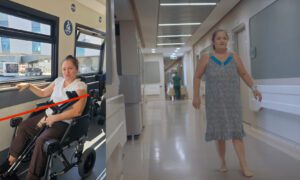Surgery can be the right choice in certain situations, especially when a condition is severe, progressive, or causing permanent damage. However, many patients experience lasting relief through less invasive treatments, allowing them to avoid the risks and downtime associated with surgery.
While surgical procedures can be effective, they also carry potential complications such as infection, blood clots, nerve injury, or poor healing. Recovery may take weeks—or even months—and often involves significant lifestyle disruptions. Additionally, surgical costs can be high, even with insurance.
Thanks to advances in modern pain management, patients today have more options than ever to control pain, improve mobility, and restore quality of life without undergoing surgery.
Understanding Pain and Its Causes
Pain generally falls into two categories:
- Acute pain: Short-term pain that develops suddenly after an injury or illness and usually resolves as the body heals.
- Chronic pain: Pain lasting three months or longer, often caused by ongoing medical conditions or nerve damage.
Common conditions that may be managed without surgery include:
- Herniated or bulging discs– Spinal discs pressing on nerves can cause back and leg pain.
- Arthritis and joint degeneration– Inflammation and cartilage breakdown in joints like the knees, hips, and shoulders.
- Sciatica and nerve compression– Pain radiating from the lower back down the legs due to nerve irritation.
- Sports injuries– Muscle, ligament, and tendon injuries that benefit from targeted therapy.
- Spinal stenosis– Narrowing of the spinal canal causing nerve compression and discomfort.
Accurate diagnosis is crucial before beginning treatment. Imaging tests, physical exams, and a detailed medical history help pinpoint the cause of pain and guide the most effective, least invasive treatment plan.
Interventional Pain Management Techniques
Epidural Steroid Injections
Epidural steroid injections deliver anti-inflammatory medication directly into the space surrounding the spinal nerves. This treatment reduces swelling and irritation, relieving pressure and pain.
Most effective for conditions such as:
- Sciatica
- Herniated discs
- Spinal stenosis
Corticosteroid Joint Injections
These injections target painful joints like the knees, hips, shoulders, and wrists. The corticosteroid medication reduces inflammation and provides pain relief for weeks or months.
Often used for:
- Arthritis flare-ups
- Joint injuries from sports or overuse
Nerve Blocks
Nerve blocks use a local anesthetic—sometimes combined with a steroid—to temporarily stop pain signals from reaching the brain. They can be used to:
- Diagnose the source of pain
- Provide relief from chronic conditions such as nerve entrapment or complex regional pain syndrome (CRPS)
Plasma (PRP) Injections
Platelet-rich plasma (PRP) therapy uses a concentration of a patient’s own blood platelets to promote natural healing. Growth factors in PRP stimulate tissue repair and reduce inflammation.
Commonly used for:
- Tendon and ligament injuries
- Early-stage arthritis
- Soft tissue damage
Medication Management
A structured medication plan can help control pain while minimizing side effects. This may include:
- NSAIDs for inflammation and general pain relief
- Muscle relaxants to ease spasms
- Nerve pain medications such as gabapentin or pregabalin
Long-term use of certain medications requires careful monitoring to prevent dependence, gastrointestinal issues, or other health risks.
Non-Invasive Pain Management Techniques
Physical Therapy and Exercise Programs
Custom rehabilitation programs focus on:
- Improving strength and flexibility
- Correcting posture to reduce strain
- Restoring mobility and function over time
Lifestyle Modifications
Small daily changes can make a big difference in managing pain, such as:
- Maintaining a healthy weight to reduce joint stress
- Adjusting workstations and home environments for better ergonomics
- Prioritizing quality sleep and practicing relaxation techniques
Alternative Therapies
Complementary options can work alongside medical treatments to relieve pain:
- Acupuncture to stimulate nerve pathways and reduce discomfort
- Massage therapy to relax muscles and improve circulation
- Chiropractic care to address spinal alignment issues
- Mind-body approaches like yoga, meditation, and breathing exercises
- Heat or cold therapy to soothe inflammation and muscle tension
Benefits of Choosing Non-Surgical Pain Management
- Reduced recovery time compared to surgical procedures
- Lower overall costs without hospital stays or surgical bills
- Ability to stay active and maintain daily routines
- Fewer risks and complications than invasive procedures
When Surgery Might Still Be Necessary
While many patients respond well to non-surgical care, surgery may still be needed in certain cases, such as:
- Severe or worsening nerve damage
- Progressive muscle weakness
- Loss of bladder or bowel control
In these situations, a pain specialist will carefully evaluate the risks and benefits before recommending surgery.
How to Choose the Right Pain Management Plan
An effective treatment plan begins with:
- Consulting a board-certified pain management doctor
- Completing a thorough medical evaluation and diagnostic imaging
- Combining interventional treatments, medications, and lifestyle adjustments for comprehensive care
Conclusion – Taking Control of Pain Without Going Under the Knife
Many patients find lasting relief through targeted, non-surgical pain management techniques. With the right combination of interventional procedures, therapy, and lifestyle adjustments, it’s often possible to control pain, improve mobility, and avoid surgery altogether.



































